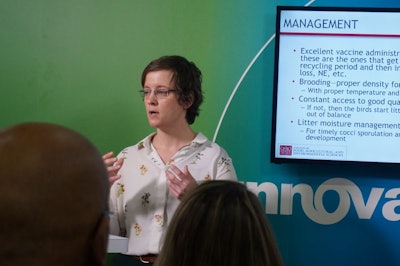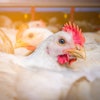
Two of the biggest health challenges with no antibiotic ever (NAE) production are coccidiosis and necrotic enteritis, explained Ph.D. Lisa Bielke assistant professor at Ohio State University during the Merck Animal Health interactive forum on Innovation in Poultry Production and Health at the 2019 International Production & Processing Expo (IPPE). Held at the Georgia World Congress Center (GWCC) in Atlanta, Georgia, February 12-15, 2019, IPPE is the world's largest annual poultry, meat and feed industry event for attendees to network and become informed on the issues facing the industry.
The focal point of coccidiosis control in NAE production in the U.S. is vaccination at the hatchery, since use of ionophores is prohibited and many programs do not allow the use of chemical coccidiostats. One of the benefits associated with coccidiosis vaccination in the hatchery is that early exposure of chicks and poults to the coccidia leads to earlier cycling of the coccidia in the house. This results in earlier development of immunity compared to if they were exposed in the house. Early cycling of coccidia and immunity are beneficial for preventing necrotic enteritis, Bielke explained.
One factor that can ensure rapid cycling in the house is keeping the birds closer together, such as with half-house brooding. However, a balance needs to be made between keeping the birds close together and still maintaining good litter quality.
Management factors in NAE production
Management plays a key role in successful NAE production. Bielke explained that good quality feed is potentially more important than what producers are feeding as specific ingredients. Enzymes and probiotics can play important roles in improving digestibility of the ration and preventing the proliferation of detrimental bacteria like clostridia.
Other management factors that are critical in the success of an NAE operation are air control, temperature and water quality. “If you wouldn’t drink the water, why would you expect the birds to?” she said.
Downtime between flocks is key. While she explained that she didn’t have a specific amount of downtime, two weeks is a good goal for which to shoot.

















